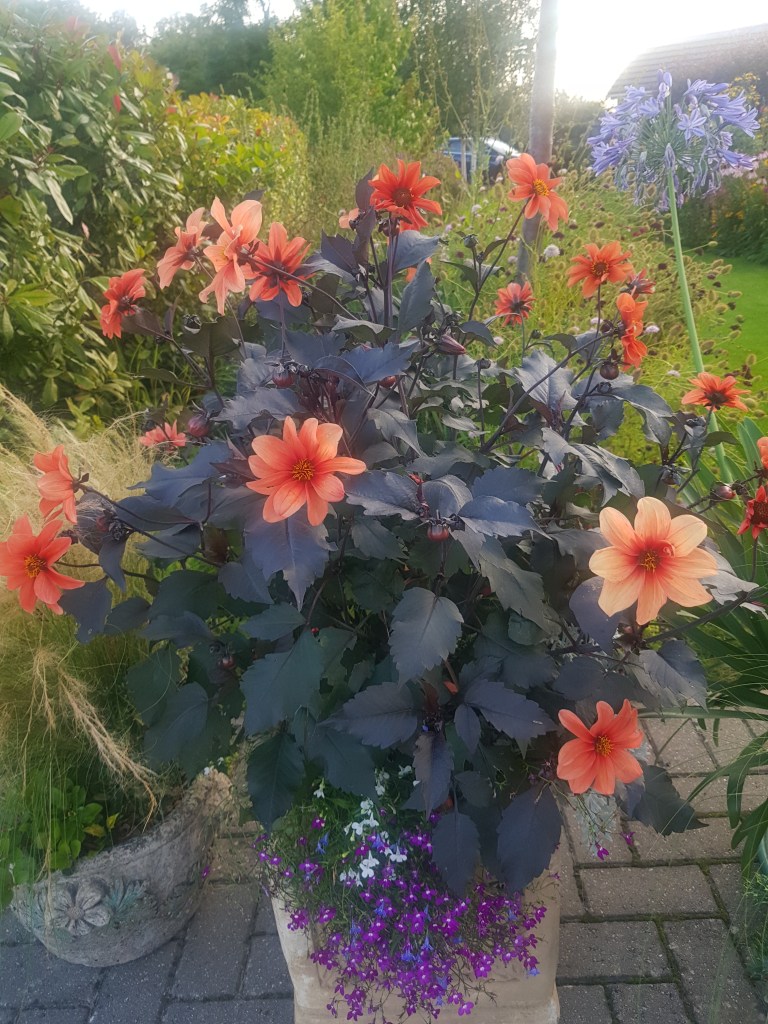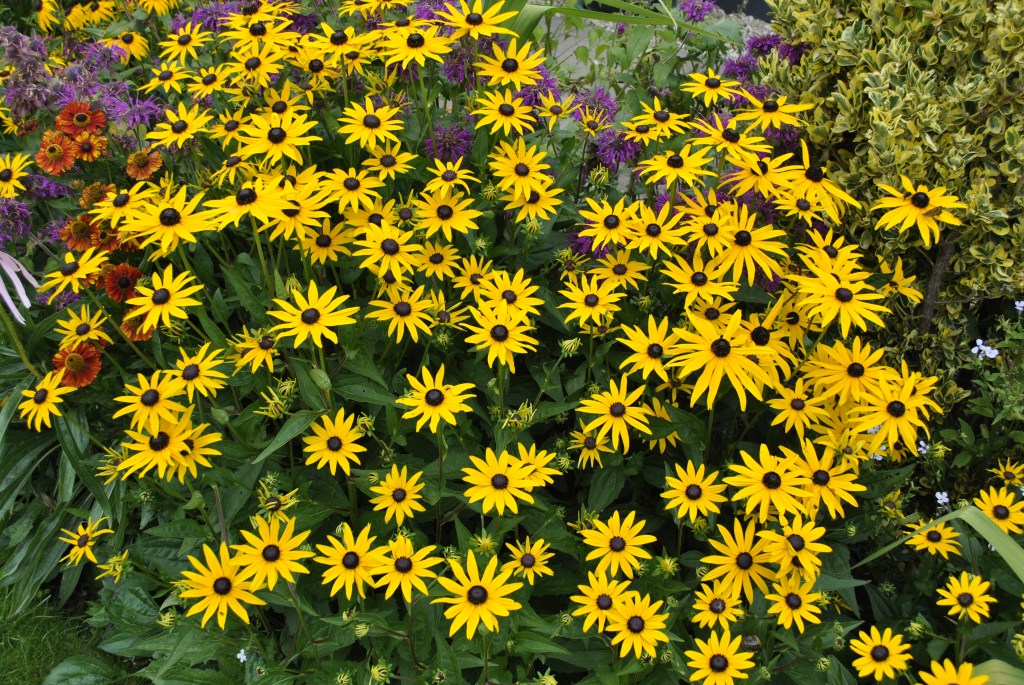
I have been absent for a couple of weeks due to holidays and a very poorly wife who contracted a nasty dose of Covid courtesy of Easy Jet! Air travel still carries risks, and several friends have succumbed to the pesky pandemic in recent weeks. On a lighter note, Dahlia ‘David Howard’ looking resplendent in the morning dew and new to me this year, but I am disappointed to find that the flowers do not go over well, hanging on in tatters unless I am extremely diligent with deadheading, removing the spent flowers as soon as they go over. This is a shame as I love the beauty and art of the flower.

I have a love-hate relationship with Ivy. It is making a takeover bid on my western boundary fence and is quite a nuisance. However, when it matures and turns arboreal, the flowers are a magnet for bees, wasps, and butterflies at this time of year, and the black fruits are a favourite of Blackbirds in the winter. On mild days it is literally buzzing with life. I think the wildlife will win this one!

It has been a bumper year for grapes and the harvest from my single vine was 11.3kgs which is astonishing. The variety is Vitis labrusca ‘Isabella’, the Pink Fox Grape, predominantly used for jam making in the US but sweet enough to eat as a dessert grape, if you don’t mind the pips!.

The fruits look more like blueberries than grapes!

The stand out pollinator food plant this year has undoubtedly been Salvia uliginosa, which has constantly been covered in bees, particularly bumble bees, since May and is still going strong. It is very tall and ethereal, swaying in the slightest breeze, but the bees hang on determinedly. As I have mentioned previously, due to their size, the bees do not enter the flowers, they make a hole in the base from the outside to sip the nectar. Clever little bees!

We all make mistakes! Some years ago I planted one small pot of the tall grass, Miscanthus sinensis, at the back of the shrubbery where I naively thought it would stay and provide a nice backdrop for other, shorter shrubs. It has now spread throughout the shrubbery, popping up everywhere and taking over. A real survivor, it is totally bombproof and makes the very best of whatever conditions it finds itself in.

The seedheads are also beautiful at this time of year and will stand throughout the winter, looking particularly good after frost.

Another casualty of last year’s harsh winter was my only remaining Canna ‘Tropicana’ which I leave in the ground under a good mulch of compost. This would usually flower in August but here we are in October and it is only just beginning to flower. It only has two flower spikes this year instead of the usual three or four which probably means part of the enormous tuber turned to mush due to the cold and wet.

Finally, surely the purest white of all pure whites, (with just a hint of green!) Lathyrus latifolius ‘White Pearl’, planted many years ago and almost forgotten until these perfect, but unscented, everlasting Sweet Pea flowers adorn the arch over which they mingle with the delicate pink rose ‘Dorothy Perkins’.
Have a great weekend
David






